In the comments of their poster entitled “Welcome to Grade THREE!”, the Battalion Bloggers asked some questions. Posts lead to questions and questions to a search for answers. Below is the next part of our shared learning journey as I attempt to find answers and learn more along the way.
For their original post…
Welcome to Grade THREE!
For the related preceding post on this blog...
The Outback and Other Information
Hello Battalion Bloggers,
I know you're having are busy in school at this time and I have been very busy with DVD/CD work for schools and community groups so it seems it can take us some time to reply to each other but our contacts are always interesting.
I thought I would share some ideas I had when thinking about the questions and curiosities in your comment. I know some ideas I share can be a little hard to understand at times but this is what can make learning interesting as we try to discover meaning. To answer you, I always have to research more information, try to understand what I find and then try to explain what I find in in a way you can more easily understand. Our posts and comments means our learning journeys cross for a time. Here's what resulted...
We are glad that the perentie and lace monitors are only slightly venomous and that they are shy and will run away when they see people. Can the perentie and lace monitor venom kill a person if they bite them?
In the original post, I mentioned the monitors are thought to be slightly venemous but I haven't heard of any deaths from monitor bites in Australia. Some of the effects of a monitor bite from lace monitors or Komodos might be (according to Wikipedia's Komodo reference) rapid swelling, localized disruption of blood clotting, and shooting pains, with some symptoms lasting for several hours. The large Komodo has been known to attack and kill animals such as goats and there are reports of human deaths. As with all animals, we should be careful with the biting end and leave wild animals alone.
Perentie
Lace Monitor
We wonder why the komodo dragon is only found in Indonesia now and not in Australia anymore?
Komodo Dragon
Different species of monitor lizards are found in many countries. According to Wikipedia, they are found "through Africa, the Indian Subcontinent, to China, down Southeast Asia to Indonesia, the Philippines, New Guinea, Australia and islands of the Indian Ocean, and the South China Sea. A large concentration of monitor lizards occurs on Tioman Island in the Malaysian state of Pahang." What this suggests is there are many species of monitor lizards. The Komodo, perentie and lace monitors are just three.
HOW could they get to Indonesia when they once roamed Australia?
In my post, I mentioned fossils of Komodo dragons were found in Australia so they had once been here. If you look at the Komodo Dragon Evolutionary History link, it mentions recent fossil finds in Australia suggest it's possible Komodo dragons evolved in Australia and spread to Indonesia when sea levels were much lower during the last glacial period (around 12,000 to 110,000 years back). With the end of the glacial age, they were cut off from Australia by rising waters. Perhaps a changing environment wasn't suitable for them here in Australia so they died out leaving the Komodo only in Indonesia. We would need more information to be certain but, at this time, an accepted belief is the monitors evolved in Asia perhaps 40 million years back and then spread.
We also have evidence of much a much larger monitor lizard in Australia known as Megalania (Megalania prisca or Varanus priscus). It is thought to have died out 30,000 to 40,000 years back so it's possible the earliest indigenous Australians had seen them. Most recent estimates say they might have grown to 4.5m (15 feet) and weighed up to 331kg (730lb). With the largest wild Komodo measuring 3.13 m (10.3 ft) long and weighing 166 kg (366 lb), the megalania would have been huge. I wouldn't go hiking in our national parks if they were still around.
We wonder if they lived in both places but then they died out in Australia.
I liked your suggestion and suspect there was a time when they were found in both places. Somewhere back in time monitors must have had a common ancestor. The different species evolved when populations were cut off from others. Adapting to the local conditions, in time they developed differences to other populations. When there is enough change so one population is unlikely to breed with another*, they are said to be a new species. Look at the monitor lizard below. It is a varanus salvatorii (Salvatori's monitor) from New Guinea.
Do you notice all of the monitor lizards on this post have similarities? They are all part of the genus varanus (monitor lizards).
Do you see they also all have differences? The differences suggest different species.
Salvatori's Monitor Lizard
New Guinea's Salvadori's Monitor Lizard
* There are examples where animals of different species can interbreed (have babies together) so long as the animals are of the same genus.
horse (equus ferus) + donkey (equus tigris)= mule
(equus is the genus and ferus/tigris are the species names)
male tiger (panthera tigris) + lioness (panthera leo) = tigon
male lion (panthera leo) + female tiger (panthera tigris) = liger
(panthera is the genus and tigris/leo are the species names)
Why would they die out?
As mentioned above. the Komodo dragons may have died out in Australia because of climate change. As an example, when the first people came to Australia perhaps fifty to sixty thousand years ago, Australia was much wetter with forests and lakes. In time, changes in climate led to Australia drying out leaving desert where once there was forest. There might have been other reasons why they became extinct in Australia but, without evidence, we're only guessing.
Spike is SO cute! We think that the picture of the echidna digging his claws into the grown and curling into a ball to protect himself was SO cute! Do echidnas get frightened easily?
Echidna
When I discovered an echidna in my garden, it was probing the soils with its snout in search of food. It didn't take much notice of me and I suspect their eyesight isn't too strong. When I came too close, it dug its claws into the ground and showed its spines. I don't think they are too easily frightened but, just like you, they are careful if danger is near.
Once they feel danger has gone, they go back to their hunt for food.
We wonder if they do much damage to gardens like voles can do?
If I hadn't seen the echidna in my garden, I don't think I would have known it had been there as they leave little trace. It's possible others have been in my garden but I have only ever seen one. I have seen many in the wild. I saw the above echidna waddling its way across a local park. Even though I was close, it either didn't see me or wasn't frightened.
We wonder what they like to eat … besides ants!
In the wild, the echidnas mostly eat ants and termites. The above photo shows a local termite mound around 1m high although I have seen some termite mounds much higher in other parts of Australia. When hiking, I sometimes see termite mounds where I can tell echidnas have been using their strong claws to dig. Once opened, the echidna can use its long, sticky tongue to catch ants or termites.
My favourite local animal sanctuary, Potoroo Palace , has three echidna. It isn't possible to gather enough ants or termites for them so the keepers mix a special recipe to feed their echidna. The mix includes minced meat, olive oil, raw egg, glucose powder, baby porridge, processed bran, vitamin E powder and calcium powder. In the video below, you will see Spike enjoying a meal as the keeper shares information with tourists.
Schools and students have permission to use this video clip for non-commercial, educational purposes.
We wonder how small an echidna’s egg would be. We STILL think it’s SO cool that they are egg-laying MAMMALS like platypuses!
Echidna eggs are only about 2cm across. The females produce only one small egg about two weeks after mating. It's egg is placed in a backward facing pouch where it hatches about 10 days later. The baby echidna (known as a puggle) stays in the pouch for about two to three months before it's ejected from the pouch. It's spines start to develop in the pouch. Can you imagine a mother with a spiky baby in it's pouch? Perhaps when the puggle gets too spiky, mum thinks it's time for baby to leave the pouch.
How BIG do echidnas grow … we wonder if our Grade Six teacher would be a GOOD referent for measuring an echidna!
Long-beaked echidna can be 45cm to 100cm in length and weigh around 4kg to 9kg. The short-beaked echidna in my area can be around 30cm to 45cm in length and weigh 2 to 7 kg.
We really enjoyed seeing all the pictures of your fieldtrip to the Outback! It looks like hardly anybody lives there. It would probably be a hard place to live because it looks like there aren’t any stores around to get food or water. It looks SO hot too!
Summer temperatures in Australia can reach over 40C in summer. There has been a few examples measured up to around 50C. My first full time school wasn't in a desert area but was in a semi-arid (not quite desert) area. I recorded a maximum temperature in the shade of around 45C for two weeks running. As the sun goes down, the temperatures in Australian deserts can normally drop down to around 3C to 6C and there have been recordings of temperatures as low as -7C in Alice Springs in winter.
We loved Ayer’s Rock and the Devil’s Marbles at Karlu Karlu. We wonder how those rocks got stacked like that. They look like they could fall off at any moment! We wonder how long they’ve been stacked like that...
Karlu Karlu
In the top photo, you can see Karlu Karlu has many such granite rocks but they haven't been stacked. The second photo gives you an idea of how large they can be. The man in the photo is standing on and leaning against the same rock. Erosion by rain and wind has been at work wearing away the rock at what looks like the base of the upper section. The upper section will eventually break off and fall. Maybe it already has. The photo was taken 28 years back but the erosion is a slow process.
… and also how old Ayer’s Rock is! It just looks like a place where tons of poisonous snakes and spiders would live.
Uluru is known as a monolith (single stone) and is sandstone. The sandstone was thought to have been deposited perhaps 550 million years ago. There are snakes and spiders around Uluru but I think the snake is the woma python. Being a python, it isn't poisonous. There are poisonous species of snakes in my area near the coast. They are the red-bellied black snake, brown snake, tiger snake, and death adder. I have seen the first three in the wild but, as yet, haven't seen a death adder.
Do armadillos live in the outback?
Armadillos aren't native to Australia.
How long and how tall is Ayer’s Rock?
It is really much larger than what you can see in the photos. Most of it is below the surface. If you were to go for a walk around the base of the Uluru you see in the photo, it would be a walk of a little over 9km (~6 miles). The second photo gives you an idea of how high it is. You can see people have climbed to what looks like the top although the real highest point on Uluru is 348m above the base and is to the left and not quite in the photo.
Uluru (Ayers Rock)
Uluru Climb
We LOVED all your pictures of the outback. We loved how you told us that people would build their houses underground to stay cooler. How would they get to their houses?
Coober Pedy
Coober Pedy's underground homes can be basic but I have been inside one I would consider more luxurious. It included a swimming pool with a walled part built out of the home. Like most homes, it had a front door, rooms, furniture and electricity. While there are no windows in walls, there are vents in the ceilings for light and air.
What would happen if a rainstorm came … would those houses get flooded?
Being in an arid area of Australia, its average yearly rainfall is only about 156mm (about 6") so flooding isn't too much of a problem. The homes also tend to be built into hills and not low where water might be a problem.
Do the houses leak when there is a rainstorm?
Low rainfall means having leaks would be a rare but I guess they would have big problems if climate change brought much higher rainfall. People find being underground is more comfortable where summer temperatures have reached as much as 47C although the average summer temperature is 30-32C. The big attraction for living in Coober Pedy is the opal. Opal is mined and made into jewellery.
Wouldn’t it be hard to dig into the ground to build a house?
Many in Coober Pedy are miners. They can use digging machines to dig mines in search of opals or to dig homes. Early settlers probably used a pick to dig their homes. Imagine, you don't need bricks or timber if you want a new room, you just need a place to dump what you dig. If you're lucky, you might even find opal when digging your house.
I thought I had a photo of a home interior but I haven't as yet located it amongst thousands of old photos so below is a photo I found through Wikimedia Commons.
Description: Coober Pedy, South Australia - underground house display. Date: 26 August 2003 Author: Nachoman-au

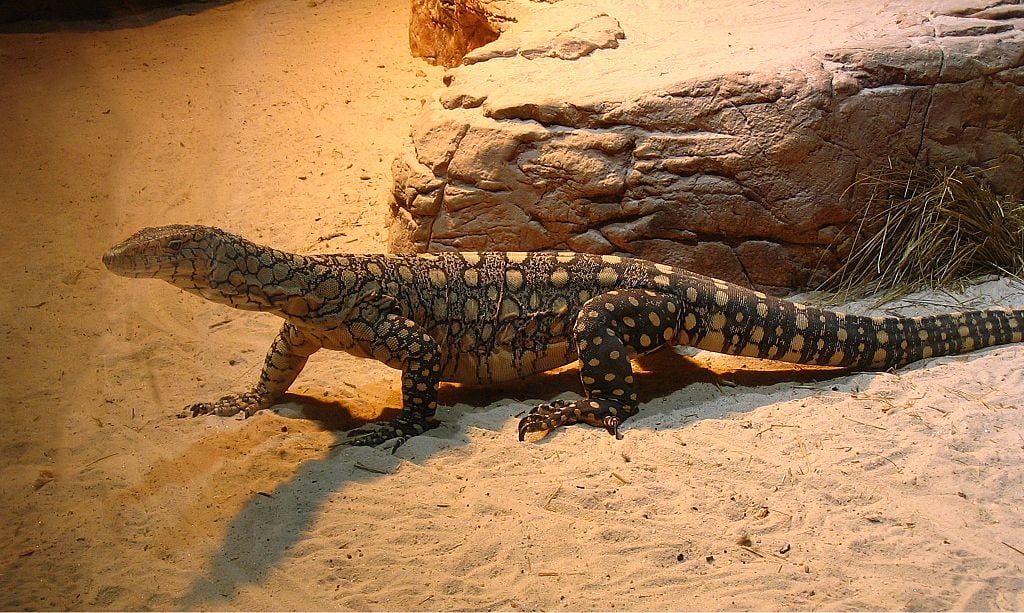

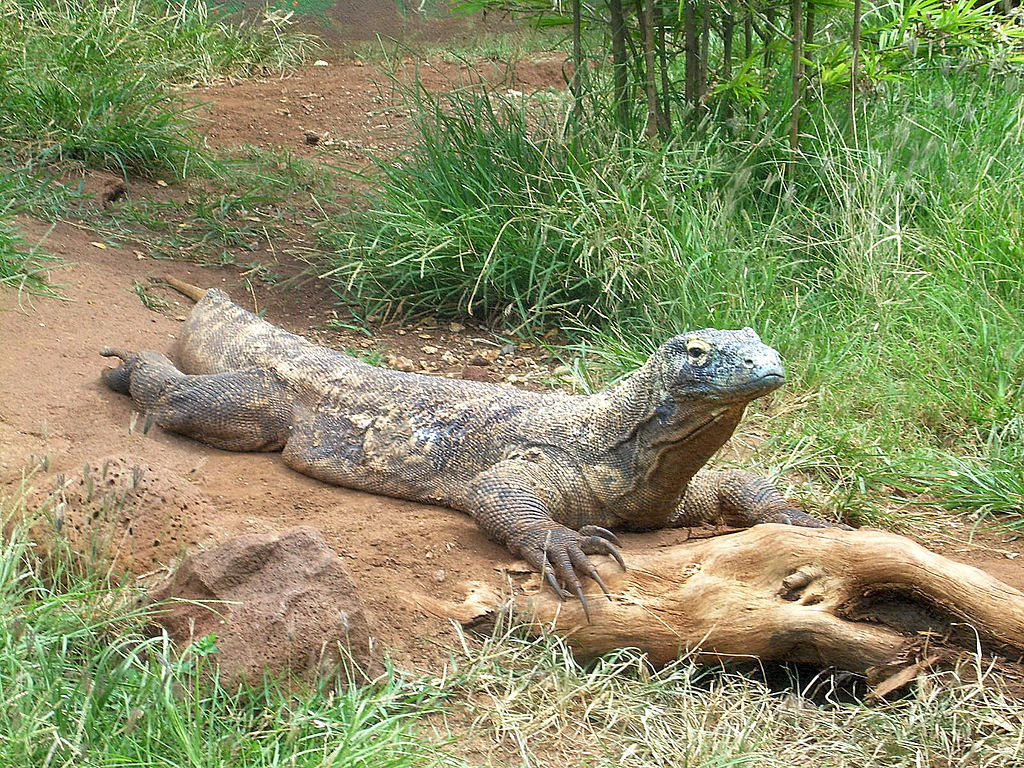
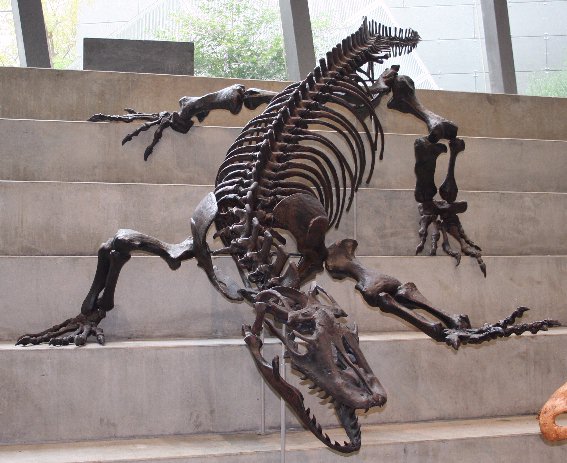
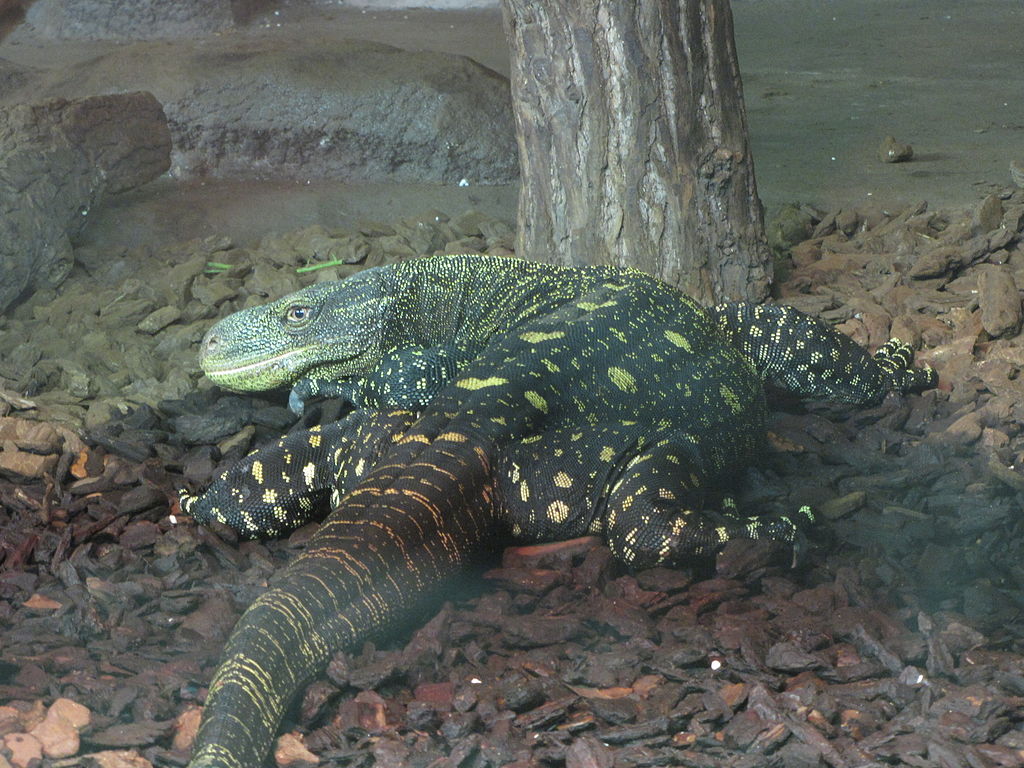
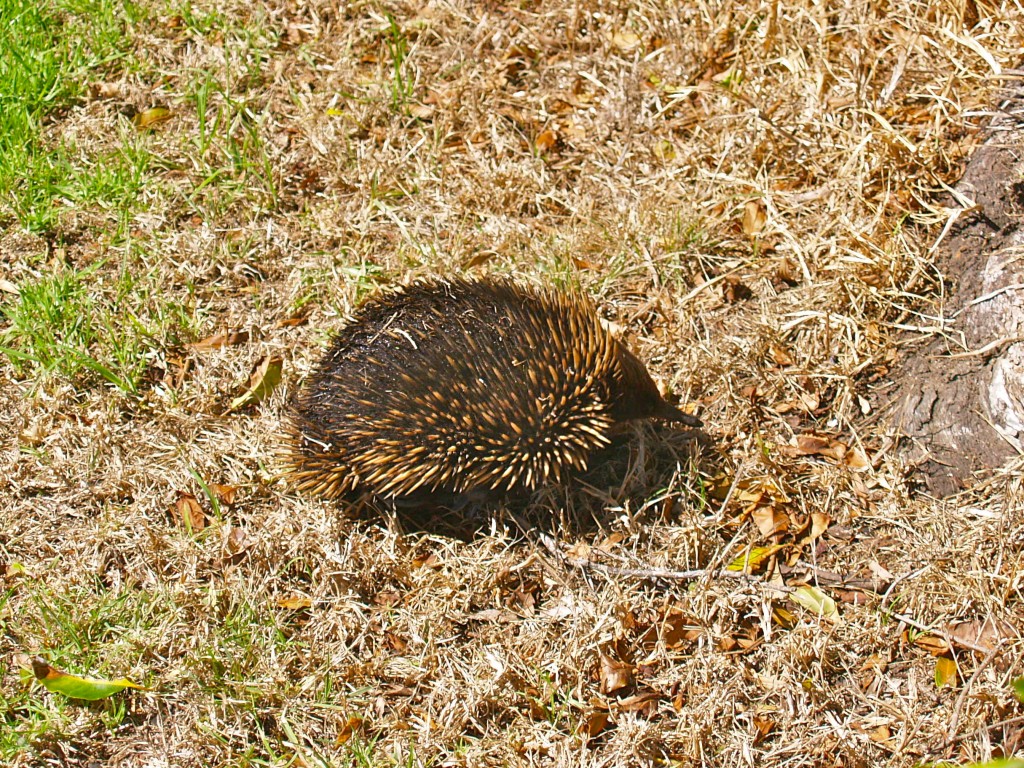
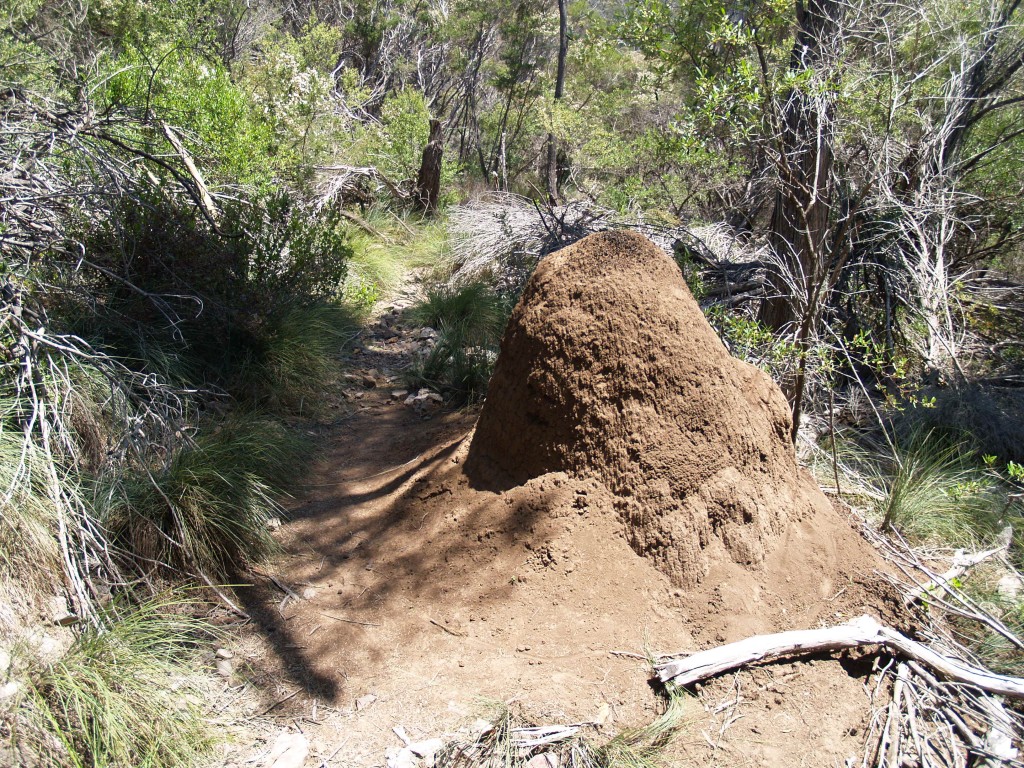

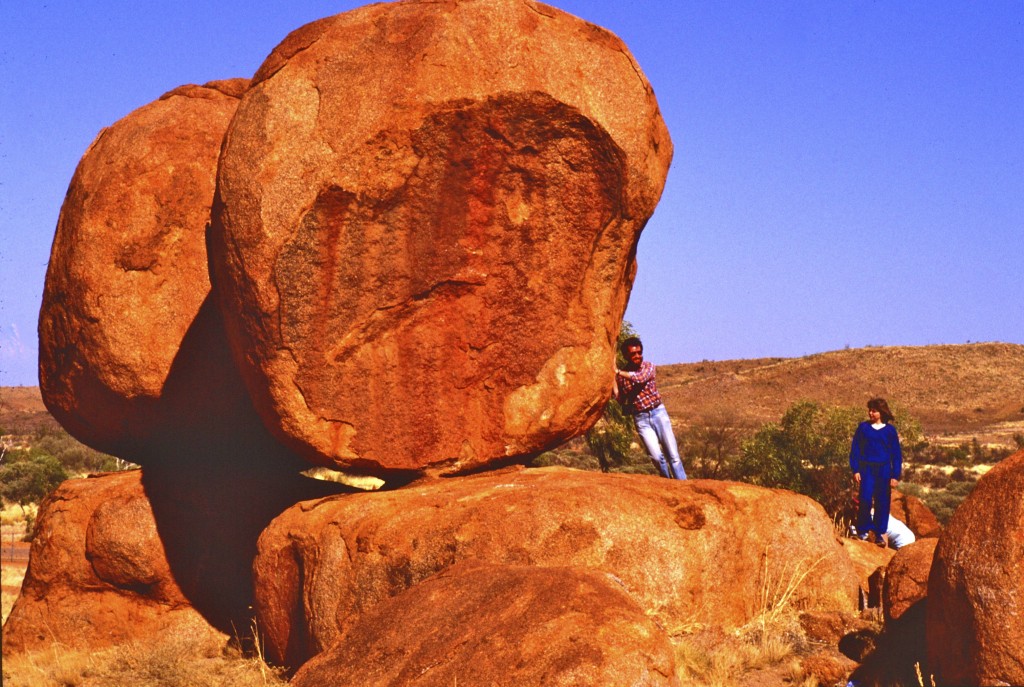
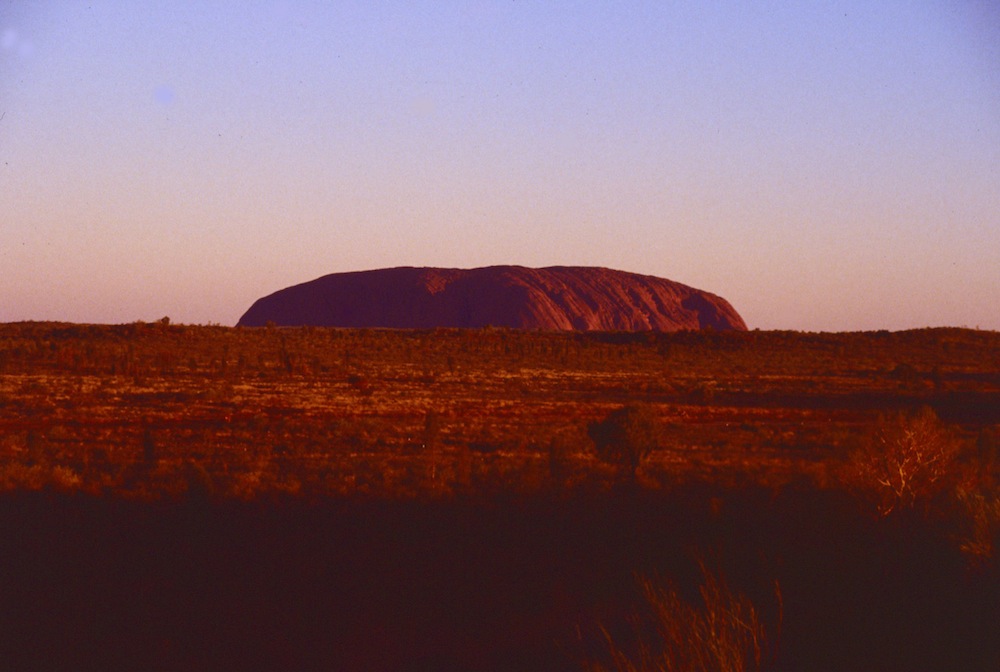



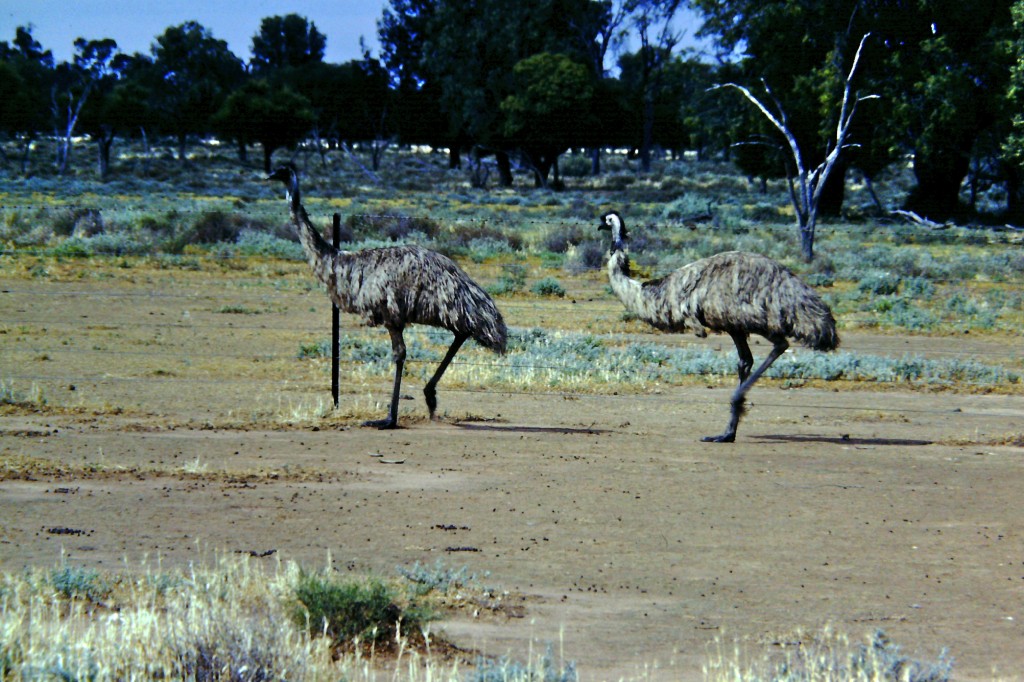
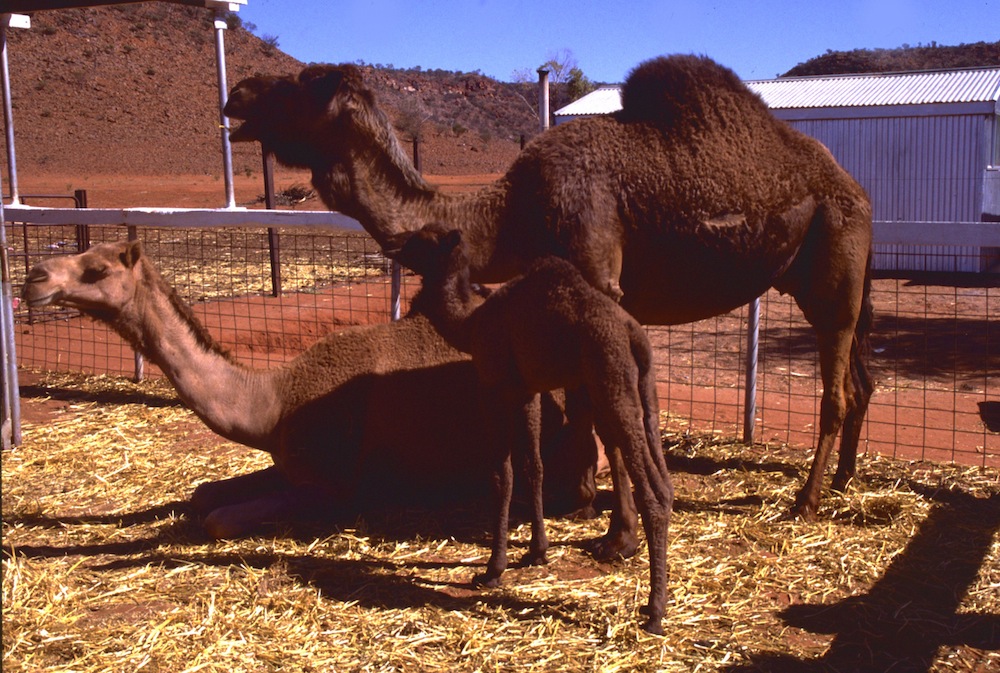
The Battalion Bloggers
Hi Ross!
Thank you for leaving us another GREAT comment on the blog. We really enjoy learning from you. It makes us feel good to know that, while you are researching for us and writing your extended blog posts, you are also learning for and from us!
You’re right about being careful around wild animals … and domestic animals … and respecting the “biting end”! We think that the symptoms of a lace and perentie monitor lizard bite sounds awful! We’re glad you can’t die from their bite, though!
Wow … the megalania was HUGE! It would have been as long as 2 ½ of our grade six teacher or … 3 of Mrs. Renton! We wonder if it had a poisonous bite. We think it wouldn’t really have mattered, though, because ONE bite from something THAT huge and you would be dead! Gulp! Probably, even with a flick of its tail, a person would be killed right away! Double gulp!
As a class, we searched up pictures of the liger and the tigon. They are SO cute. Most of us had never heard of them before. It’s neat to know that two species can interbreed if they are the same genus. It’s a lot to think about, though!
Every time we see a picture of Spike, or Sapphire, we ALL say ahhhh!!! We LOVE those photos. We wonder if Sapphire was named for the crystal sapphire … was she born in September? The sapphire is the birthstone for September.
We think it’s really cool that an echidna can stick its tongue in and out 100 times in a minute, if they are very hungry. We also thought it was neat that their ear flaps are opposite to ours because they can hear predators and also dig without getting dirt in their little ears. That’s really important because they have sensitive hearing … and their eye sight is lousy!!! We think it’s funny how much an echidna looks a little like a porcupine and a platypus, (because of the beak)!!! We wonder what the other two echidna’s names are at the Patoroo Palace? Are they males or females? Which one is the oldest? Which one is the youngest. We know that Spike is about ten years old. We LOVED the video you sent to us. We learned a lot about echidnas through that also!
We think we need to do some more research about the homes that are built underground. We still have so many questions. It may even end up to be another blog post because while we were researching indigenous voluntary no-contact tribes we discovered some amazing different homes around the world! We wonder how long it would take to dig a home under ground? We wonder how they get down to go into their front doors … maybe they use ladders or maybe they carve steps down into the hillside.
We looked at the link you shared for Uluru … and we all fell in LOVE with the burrowing bettong! (https://www.google.ca/search?q=burrowing+bettong&espv=210&es_sm=93&source=lnms&tbm=isch&sa=X&ei=xuucUqPcMNLyoATh24HwCw&ved=0CAkQ_AUoAQ&biw=1024&bih=666#facrc=_&imgdii=_&imgrc=CNkWJDfUASgpAM%3A%3BWBtVtLYF2MFiaM%3Bhttp%253A%252F%252Fcdn1.arkive.org%252Fmedia%252F11%252F11A8AA5F-EC9D-4E7A-9CAB-F9D5B4212290%252FPresentation.Large%252FBurrowing-bettong-ssp-nova-hopping.jpg%3Bhttp%253A%252F%252Fwww.arkive.org%252Fburrowing-bettong%252Fbettongia-lesueur%252Fimage-G125642.html%3B650%3B433) It looks like a cross between a mouse and a teeny tiny kangaroo! We DEFINITELY need to do some more research about the animals that live there too.
We really enjoyed reading your blog post and learning MORE about Australia from you, Ross! Thank you for always taking the time to teach us more about the world!
The Battalion Bloggers 🙂
PS One of our bloggers is CRAZY about proctodons … and … wonders if you have ever seen a fossil of this prehistoric kangaroo!
rossmannell
Post authorHello Battalion Bloggers,
I’m in the middle of my second last DVD edit of the year but took the chance to take the break and leave a comment.
Did the magalania have a poisonous bite? I think most monitors would have a poisonous bite but, as with poisonous snakes, not all have the same strength of poison. Considering megalania’s size, I agree with you, if it could take hold of us in its huge mouth, we wouldn’t find escape easy.
Sapphire was name after the area of Australia in which she was born. I live along an area know as the Sapphire Coast because of its sometimes beautiful blue sea scenes. Her home, Potoroo Palace, is a wildlife sanctuary staffed mostly by volunteers and funded by donations. In order to raise money, they ran a raffle. The winner had naming rights and chose Sapphire.
In March, 2013, I wrote a post for the Techie Kids from U.S.A.. I shared some photos about the area in which I live. If you scroll through, it includes some summer photos of my local coast and surrounding areas…
http://rossmannellcomments.edublogs.org/2013/03/11/my-region-of-australia-for-katie-from-techie-kids/
Echidna – Spike is my main photo subject but there are two more at Potoroo Palace. They are Priscilla (female) and Luna (a rare albino female echidna). You can see them by visiting the Potoroo Palace website…
http://www.potoroopalace.com/our-animals/echidnas/
Undergound homes – When travelling across Australia, you notice just how flat much of it is. Yes, we do have high mountains and cliffs , ancient volcanoes (inactive), valleys and waterfalls but much of what you see if looking at Australia would better be described as low, rolling hills* across arid (desert) and semi-arid landscapes. Coober Pedy falls in to the rolling semi-arid areas. Homes tend to be built into hillside so they mostly walk up to the front doors as you might.
*Australia’s highest mountain is known as Mount Kosciusko. It is only 2,228 metres (7,310ft) above sea level. When I was a teenager, it was possible to drive a car up to a car park a couple hundred metres from the top and walk up the hill. We became much more aware of the delicate alpine environment since then so now reaching the hilltop involves an 8km (5mile) walk along a path sometimes in the form of an elevated walkway to protect delicate alpine plants.
The bettong – I have seen the bettong in captivity but, as this was some time back, I don’t have a photo of my own. I have seen something I think very cute. As a university student back in the early 70s, I went on a field study in an area north of Sydney.
We were on a native animal study including some trapping for study (cage traps so the animals could be checked and released). One little creature was known as the antechinus stuartii. While it is the size of, and looks like, a mouse, it is a marsupial so could be considered more closely related to the kangaroo than a mouse. When born, the young attach to teats on the mother.
The other habit of these wonderful little, carnivorous marsupials is, during breeding season. The males die after breeding. This would leave more food for the females and their young.
I had to check on the proctodons and think you meant procoptodon, an extinct kangaroo species weighing up to around 230kg (510lb) and standing around 2m (6.6ft) tall. If I remember correctly, in the early 90s I took a class to Sydney’s Australian Museum when there was a display of extinct Aussie animals. There was a life-sized model of what I think was a procoptodont and I think there were also some fossils on display. I know I took some photos of our visit so perhaps I might one day find a photo but this will take time. When I get some rare free time, I am slowly scanning all of my old photo slides, negatives and photos. I think it might mean discovering some good treasures amongst the 1000s I scan.
Ross Mannell 🙂
The Battalion Bloggers
Hi Ross!
Thank you for leaving another comment … yes … it is really awesome that you left TWO for us on our blog in ONE day!!! We are SO lucky!
We’ve had a lot of snowy days this week. It all started with a HUGE blizzard Sunday night! When we woke up on TUESDAY there were HUGE snowdrifts EVERYWHERE … some of them even TALLER than the Grade Six teacher in SOME places!!! And, NONE of the BUSES were running. We usually have twenty-two students in our class but we only ended up with TEN kids ALL day long!!! That’s less than HALF!
The TEN of us spent time on the iPads researching our WONDERS about some of the animals you have told us about! We ended up with a TON of research about these animals … and we would like to share a FEW of these discoveries with you!
Echidnas:
• They can live up to 45 or 50 years!
• Pricilla is one of the echidnas who lives at the Patoroo Palace!
• There is an albino echidna at the Patoroo Palace!
• They can have 6 inch tongues.
• They can swim!
• Babies are called puggles.
• They are sometimes called spiny anteaters.
• New Zealand and New Guinea has LONG beaked echidnas.
• Australia has SHORT beaked echidnas!
Koalas:
• They are not bears … they are marsupials.
• They are shy, so it’s hard to find them in the wild.
• They have TWO thumbs on each front paw.
• They are related to wombats and kangaroos.
• They have one home to eat in and one home to sleep in!
• They eat a little bit of dirt every once in a while to help them digest eucalyptus leaves!
Bushtail Possum:
• They are threatened by humans.
• They have many enemies.
• Can live in many places … they adapt well.
• They are nocturnal!
Womba Python:
• Adult people are an average size of 1.5 metres long. These snakes CAN be up to 4.5 metres long.
• They are found in the arid regions of central Australia and in the south west of Australia.
• They shelter in burrows during the day.
• They use their heads as shovels to dig these burrows out.
Emu:
• It’s the largest bird in Australia.
• It is the second largest bird in the world … the ostrich is bigger.
• The babies are brown and creamy striped.
• They stay with their fathers for about 18 months.
• Emu eggs are dark green and the same colour as an avocado!
• Females are called hens.
We had a TON of OTHER cool facts that we could have shared. We LOVED all the information that you shared with us about Australia and it inspired us to do some of our own investigations! Thank you for always helping us to be curious about the world!
The Battalion Bloggers 🙂